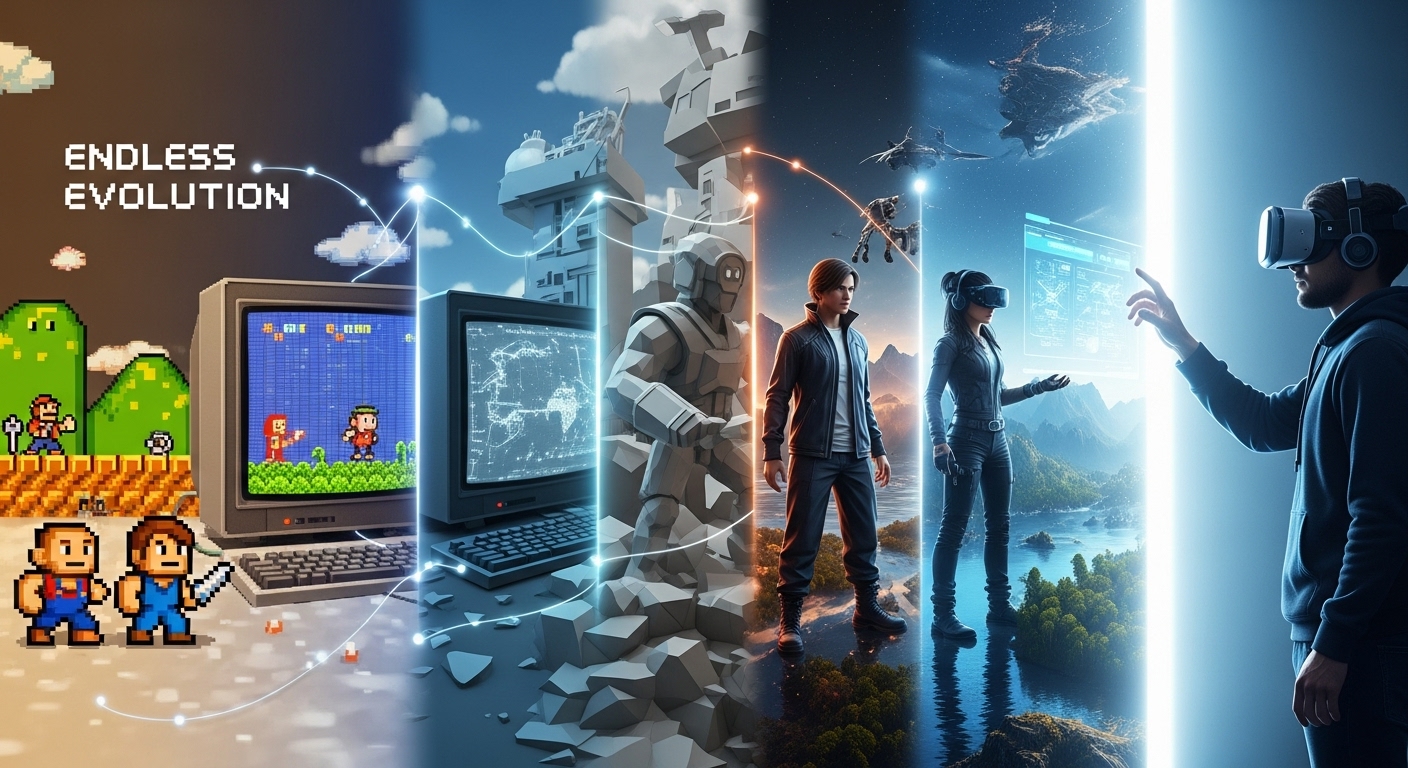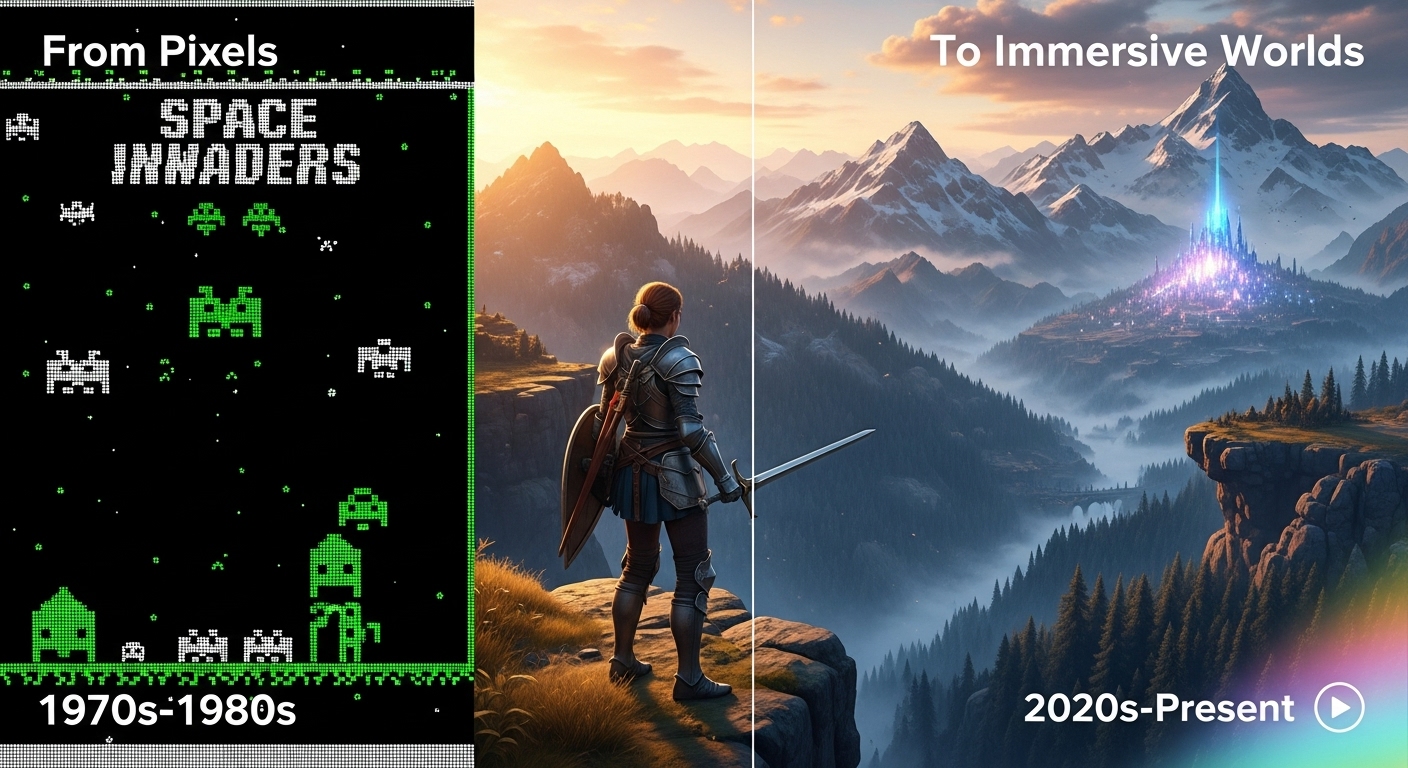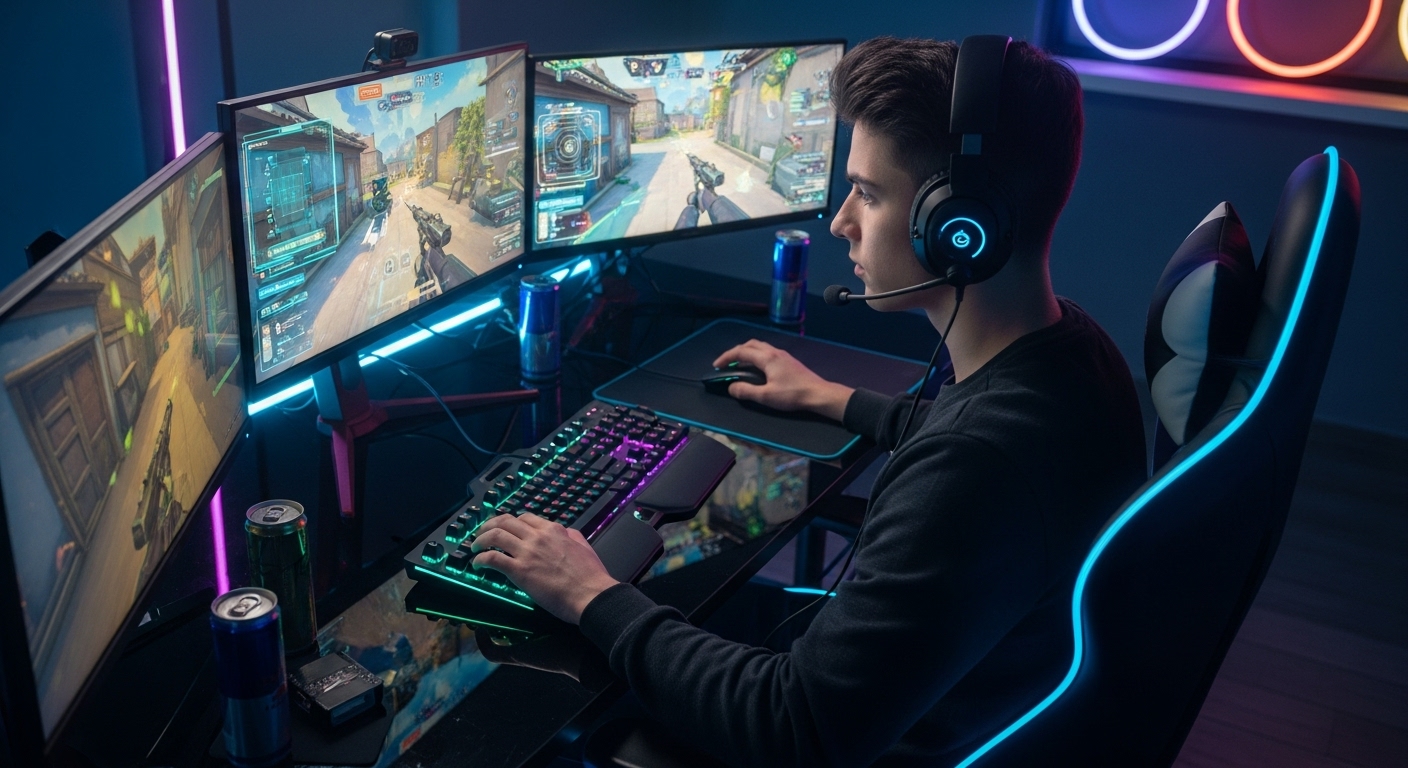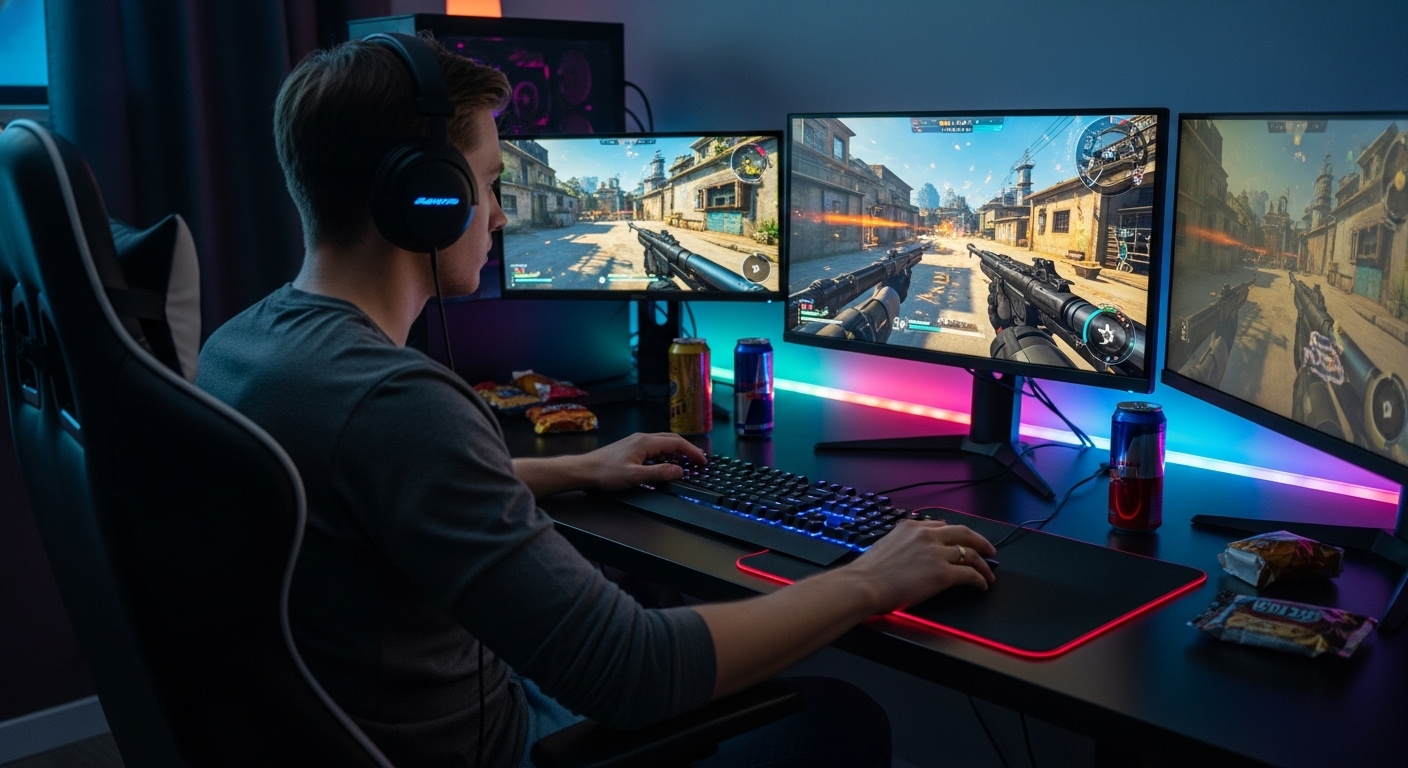Gaming has evolved from a niche hobby into one of the most influential and expansive forms of entertainment in the modern era. What once began as simple pixelated experiences on small screens has transformed into a multi-billion-dollar global industry that encompasses technology, culture, art, storytelling, and social interaction. The journey of gaming mirrors the progress of technology itself, from the early days of arcade machines to the immersive virtual worlds of today. In this blog, we will explore the evolution, impact, psychology, and future of gaming, and how it continues to shape the way we play, think, and connect.
The Birth of Gaming: From Pixels to Playgrounds
The origins of gaming date back to the mid-20th century, when early computer scientists experimented with programming simple games as a way to demonstrate computing power. In the 1950s, titles like “Tennis for Two” and “Spacewar!” marked the humble beginnings of what would later become a massive cultural phenomenon. The 1970s saw the birth of the arcade era, with games like “Pong” and “Space Invaders” capturing the imagination of an entire generation. These early experiences were simple but deeply engaging, offering players a new form of entertainment that combined skill, reflex, and competition.
As technology advanced, home consoles brought gaming into living rooms across the world. Companies like Atari, Nintendo, and Sega emerged as pioneers, introducing beloved franchises that still endure today. Games such as “Super Mario Bros.”, “The Legend of Zelda”, and “Sonic the Hedgehog” became household names, defining genres and setting new standards for gameplay and design. The 1980s and 1990s solidified gaming’s place in popular culture, transforming it from a novelty into a central pillar of entertainment.
The Rise of 3D Worlds and Immersive Storytelling
The mid-1990s marked a pivotal moment in gaming history — the transition from 2D sprites to fully realized 3D environments. The introduction of consoles like the Sony PlayStation and Nintendo 64 allowed developers to create vast, immersive worlds that players could explore freely. Games such as “Final Fantasy VII”, “The Legend of Zelda: Ocarina of Time”, and “Tomb Raider” demonstrated the power of storytelling and emotional engagement within interactive media. Players were no longer just pressing buttons; they were embarking on epic journeys, forming attachments to characters, and experiencing narratives that rivaled movies and literature.
This period also gave rise to gaming’s artistic side. Developers began experimenting with music, cinematics, and emotional depth. Titles like “Metal Gear Solid” blurred the line between film and game, incorporating complex characters, voice acting, and cinematic direction. Gaming was no longer just about achieving high scores — it was about experiencing worlds, emotions, and stories that could only be told through interactivity.
The Online Revolution: Connecting Players Across the Globe
The late 1990s and early 2000s saw another revolution: the rise of online gaming. The ability to connect with players from around the world transformed gaming from a solitary or local social activity into a truly global experience. Early examples like “EverQuest” and “Runescape” introduced the concept of massively multiplayer online worlds, where thousands of players could interact simultaneously. These games gave birth to online communities, friendships, rivalries, and entire cultures within digital spaces.
The explosion of broadband internet and platforms like Xbox Live and PlayStation Network took online gaming mainstream. Competitive shooters like “Halo”, “Counter-Strike”, and “Call of Duty” defined the multiplayer experience for a new generation, emphasizing teamwork, strategy, and competition. For many players, gaming became not just entertainment but a form of social connection. Clans, guilds, and voice chat communities turned virtual worlds into vibrant social hubs where players shared experiences, built relationships, and formed lasting memories.
The Psychology of Gaming: Why We Play
Gaming satisfies a range of human desires and psychological needs. At its core, it taps into the human instinct for play, challenge, and reward. The structure of most games — goals, rules, feedback, and progression — mirrors the way people naturally learn and grow. Achievements, levels, and rewards trigger dopamine responses in the brain, creating feelings of accomplishment and motivation.
Beyond simple reward systems, gaming offers a powerful form of escapism. It allows players to step into alternate realities where they can explore, create, and achieve things they might not in everyday life. Role-playing games let players become heroes and saviors; simulation games let them build cities, farms, or civilizations; and competitive games test their skill, reflexes, and strategy. This variety of experiences fulfills emotional, creative, and cognitive needs in ways few other forms of media can.
Moreover, gaming can foster empathy and understanding. Story-driven games like “The Last of Us”, “Life is Strange”, and “Journey” invite players to experience life through different perspectives. These experiences can evoke deep emotions, encouraging compassion and reflection. Gaming, at its best, is not merely entertainment but a medium for human expression and emotional resonance.
The Rise of Esports: Gaming as Competition
As online gaming grew, so did competitive play. Esports, or competitive gaming, transformed from local tournaments in basements to massive global events filling stadiums. Games like “League of Legends”, “Dota 2”, and “Fortnite” have professional leagues, massive prize pools, and millions of viewers watching live broadcasts around the world. Esports athletes train rigorously, much like traditional sports players, honing reflexes, strategy, and teamwork.
This rise in professionalism has elevated gaming to a new cultural status. Universities now offer esports scholarships, major brands sponsor tournaments, and streaming platforms provide instant access to live competition. What was once a hobby for enthusiasts has become a legitimate career path and a spectator sport on par with traditional athletics. Esports represents not just the future of gaming but also the evolution of competition in the digital age.
Streaming and Content Creation: The New Gaming Culture
The advent of streaming platforms revolutionized how games are experienced and shared. Platforms that allow gamers to broadcast their gameplay and interact with audiences in real time have created a new form of entertainment where personality and performance blend seamlessly. Streamers and content creators have become cultural icons, influencing trends, promoting games, and shaping the industry.
Watching games is now as common as playing them. Audiences tune in not just for gameplay but for community, humor, and shared experiences. Streaming has democratized fame, allowing anyone with skill or charisma to build a following and even make a living. This cultural shift has blurred the lines between player and entertainer, turning gaming into a participatory form of media that thrives on connection and creativity.
The Art and Design of Games
Behind every game lies an intricate blend of art, design, and technology. Game developers are storytellers, artists, and engineers rolled into one. The visual design, soundscape, and gameplay mechanics must harmonize to create immersive experiences. Whether it’s the haunting beauty of a desolate landscape or the adrenaline rush of a fast-paced battle, every element is carefully crafted to evoke emotion and engagement.
Art direction in gaming has diversified immensely. From pixel art masterpieces to photorealistic worlds powered by advanced graphics engines, games now cover a wide spectrum of styles and aesthetics. Independent developers, or indies, have also risen to prominence, creating unique and experimental games that explore unconventional themes and artistic approaches. Titles like “Undertale”, “Hades”, and “Celeste” showcase how small teams can produce profound and emotionally resonant experiences without massive budgets.
The Social Impact of Gaming
Gaming is more than just a pastime; it has become a cultural force that influences art, music, fashion, and social behavior. Game soundtracks are performed in orchestras, characters appear in movies, and gaming slang has entered everyday language. Virtual spaces in games have even become venues for concerts, political rallies, and social gatherings, especially during times when physical connection is limited.
Moreover, gaming can serve as a tool for education, therapy, and community building. Educational games teach everything from mathematics to history, while serious games address social issues, health, and environmental awareness. In therapeutic settings, gaming has been used to help with cognitive rehabilitation, social anxiety, and emotional expression. The interactive nature of games allows people to learn and heal through participation rather than passive observation.
The Challenges and Controversies
Despite its many benefits, gaming is not without controversy. Concerns over addiction, violence, and the influence of online communities have sparked debates among parents, educators, and policymakers. Some argue that excessive gaming can lead to social isolation, decreased physical activity, and mental health challenges. Others point out that gaming, like any form of media, must be approached with balance and understanding.
Monetization practices have also drawn criticism. Microtransactions, loot boxes, and pay-to-win mechanics have raised ethical questions about fairness and consumer protection, especially when targeted at younger players. The industry continues to grapple with these issues, striving to find a balance between profitability and responsible design. Despite these challenges, gaming remains one of the most innovative and rapidly evolving entertainment forms, continuously adapting to feedback and societal change.
The Role of Technology in Gaming’s Evolution
Every major leap in gaming history has been driven by technological innovation. The transition from 2D to 3D, the advent of online multiplayer, the rise of mobile gaming, and now the emergence of virtual and augmented reality have all reshaped the landscape. Modern games harness the power of artificial intelligence, motion capture, and photorealistic rendering to deliver experiences once thought impossible.
Cloud gaming represents the next frontier, allowing players to stream high-quality games without expensive hardware. Virtual reality (VR) and augmented reality (AR) have brought gaming into new dimensions, where players physically move and interact within digital worlds. These technologies promise a future where the boundary between the virtual and real becomes increasingly blurred, creating experiences that are more immersive, intuitive, and personal than ever before.
The Future of Gaming: Beyond the Screen
Looking ahead, the future of gaming seems limitless. The convergence of technology, creativity, and community will continue to expand what gaming can be. Artificial intelligence may soon enable games that adapt to each player’s behavior, creating personalized experiences that evolve over time. The rise of metaverse concepts points to interconnected virtual worlds where gaming, work, social life, and creativity coexist.
Moreover, as accessibility and inclusivity become central design goals, gaming is becoming more welcoming to people of all ages, abilities, and backgrounds. Adaptive controllers, inclusive storytelling, and diverse representation ensure that everyone can find a place in the gaming world. The future of gaming will not just be about better graphics or faster performance, but about deeper emotional resonance, shared creativity, and meaningful connection.
Conclusion: Gaming as a Mirror of Humanity
Gaming is no longer just a form of entertainment; it is a reflection of human imagination and the endless desire to explore, compete, and connect. It has become a universal language that transcends borders, generations, and cultures. From the nostalgic simplicity of arcade classics to the sprawling complexity of modern open-world adventures, gaming captures the essence of what it means to play, dream, and create.
In a world increasingly defined by digital experiences, gaming stands as both an art form and a social force, uniting people across the globe through shared stories and interactive worlds. It continues to evolve alongside technology and humanity itself, reminding us that at the heart of every game lies a simple truth — the joy of play. Gaming is more than pixels and code; it is the manifestation of human creativity, emotion, and connection, and its story is still being written with every player who picks up a controller, keyboard, or headset and presses start.



